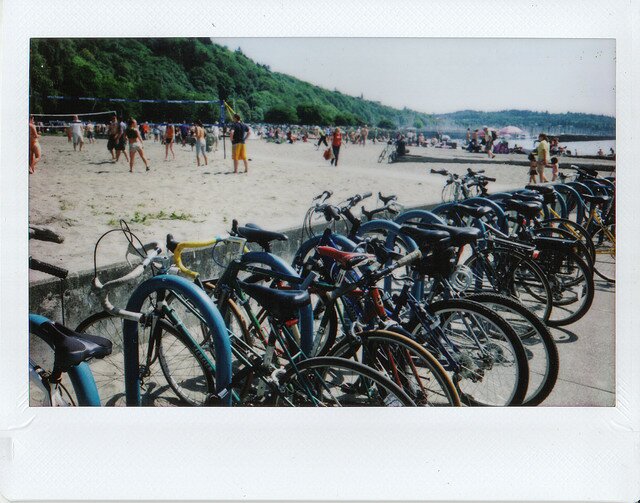The sets are pretty, the acting and script are polished, and there’s a political edge to the subject: Apparently we are watching a show at Seattle Repertory Theatre. The sociopolitical topic of David Lindsay-Abaire’s Good People (through March 31) is poverty. The script’s greatest achievement may be that it speaks truth on that subject without alienating any of the audience.
That’s not too surprising; after all Lindsay-Abaire grew up in Southie (Boston’s hardscrabble Irish enclave) but escaped its event horizon via a scholarship to the very tony Milton Academy. His play is a kind of fractal repeating of the experiences of anxiety and distrust when those who have meet those who want. Lindsay-Abaire deftly demonstrates that this is repeated at every level of class and income — and neatly separates race from the conversation, while acknowledging that important complication.
Most of the characters in Good People are of that lower economic class native to Southie. When Margaret (Ellen McLaughlin) loses her job at the dollar store, she loses the income that sustained her and her mentally disabled daughter. Her best friend is full of bad advice. Her landlady and ostensible friend turns out to be no friend at all when the chips are down. More than a lucky break, what Margaret needs is a reason to hope. She finds that in the rediscovery of an old flame, Mike (John Bolger), who left Southie, made good, and is now a fertility doctor living a posh life in a Boston suburb.
Throughout the play the notion of luck stays front and center with scenes of church-basement bingo and conversation returning to the subject at key moments. However the question of luck winds up feeling like a big game of “What if…” that’s less about happenstance than it is about choice and also circumstance.
This may be a function of the fact that drama doesn’t do chance very well. Making a play about poverty inherently biases the discussion toward a conclusion that it is choice-based. Yet Lindsay-Abaire provides just enough ambiguity to keep us guessing while preventing us from becoming too comfortable with our assumptions.
The only time when the play rings at all false is in the explanation of a push present—a post-partum gift from spouse to birth-mother. Were the push present as common as the characters suggest, they would hardly need to explain it and if they know how privileged it is, then why are they so blasé about it?
That minor glitch aside much of the dialogue (in a perfect, if somewhat academic, accent) has the snap and wit of an experienced professional aiming for what generally passes for realism on the stage. It’s facile and the laughs fall consistently and predictably. The craft of the script is that even these banalities serve the story and every onstage character has her complexities.
The technical side of this production is impeccable. James Youmans’ sets are confining and grimy for the Southie locations, expansive (and applause-inducing) for the wealthier settings. Even the set changes support the story and a vase gets a gasp (draw what conclusions you will from that).
Projections are tremendously specific and often work in concert with the surfaces where they appear. Scott Killian’s sound design is solid and evocative of working class Boston. One expects to hear the scene-change music slip into the Standells’ “Dirty Water”—an essential Boston anthem—at any moment.
There are problems with the production and these are maddening because they’re largely justified. Ellen McLaughlin is very hard to understand in her opening scene (even for a formerly fluent speaker of Southie such as yours truly) but this is entirely justifiable. Not only has Margaret never really been out of Southie, she also has serious dental problems. Whether the audience adjusts to her speech or she tightens her diction our comprehension increases early in the first half.
Another justifiable flaw is that McLaughlin and Bolger’s chemistry approaches George and Martha degrees of intimate passion. While Bolger and Zakiya Young (as Mike’s wife, Kate) are less comfortable with one another they’re also portraying characters whose marriage is troubled.
UPDATE: The good people at Seattle Rep. have gone to some pains to point out the sloppiness of the statements on local actors at the end of this article. Their points are well taken. The issues surrounding the economics of theatre outside New York City are complex and deserve more attention than some off-topic commentary tacked on to the end of a review. It should be noted that Cynthia Lauren Tewes and Marianne Owen have grown from their significant local roots to national careers. Eric Riedmann is well on his way along that path as well.
One might wish to see less distance in Young’s performance, but Kate is the most formal of this play’s characters so it’s hard to fault her. Otherwise the glaring flaw in this cast is that it’s mostly out-of-town actors [UPDATE: and even this is justifiable as the show is a co-production with New Brunswick, NJ’s George St. Playhouse]. Eric Riedmann, the only true local, does excellent work in the small but vital role of Stevie. Still there is ample room for fantasy casting from our local talent, which suggests a whole other conversation on class and economics as it relates to the theatre industry.
In the spirit of this play the Rep. is throwing open its lobby doors (or easing them open a crack) with 25 tickets to most performance of Good People priced at $1 each. While the effort is laudable one hopes that in the future they will do more to open the stage door to local talent as well.
Fantasy casting directors: Tell us which local actors you wish had been cast in Good People.
